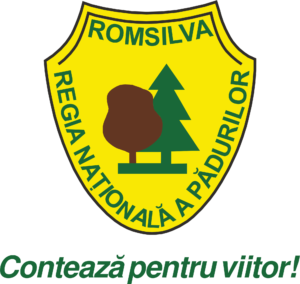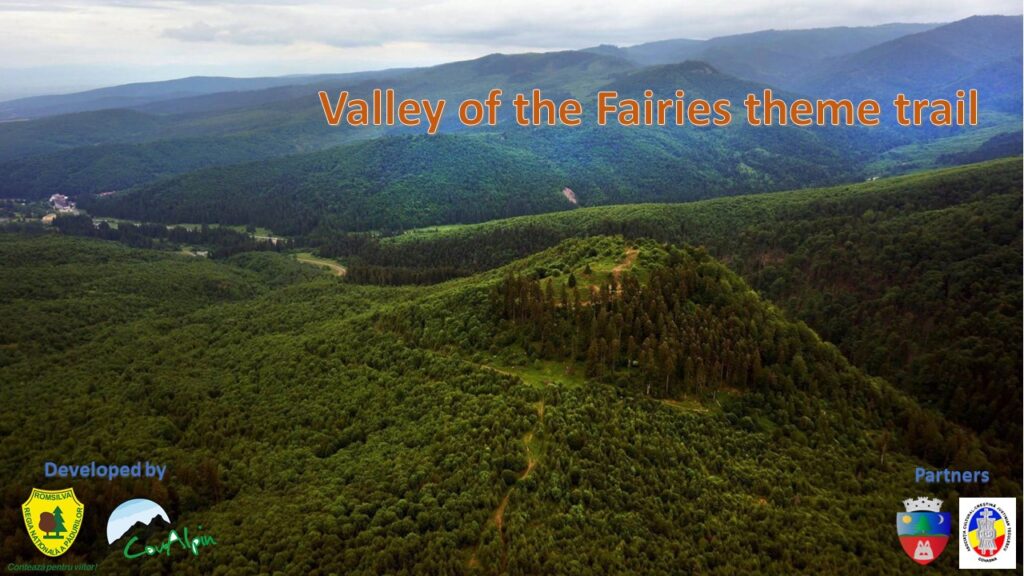Project initiated and carried out by RNP Romsilva - Covasna Forest Directorate in partnership with CovAlpin

The “Valea Zânelor thematic & educational trail” is a project initiated by the National Forestry Directorate -RNP Romsilva through the Covasna Forestry Directorate in partnership with CovAlpin Tourism and Ecology Association.
Objective: the creation and arrangement of a thematic & educational trail, intended for tourists, students and teachers.
Purpose: Promotion of ecological education, description of local habitats and ecosystems, description of tree species, flora and fauna.

Trail type: self-guided, with the support of QR codes that provide information and display photos alongside the presentation of the most valuable and interesting information about the local ecosystem. Route length: 5.5 km Level differene: D+ 310m., D- 310m. Accessibility: throughout the entire year, subject to access & visiting rules. Duration: 1.5-2 hours Number of panels: 10+1
The usage of the thematic route is done at your own risk and only in compliance with the regulations and instructions;
Never go on the road alone;
Always check the weather forecast before you set off;
Make sure you are properly equipped: appropriate equipment depends on the season, but in any season closed shoes (boots, special trekking shoes ) are MANDATORY. Light-coloured clothing is recommended in summer;
Make sure you have enough fluids with you. Avoid alcoholic drinks, they dehydrate you;
Do not destroy the markings and signs on the route;
Do not deviate from the marked route;
Be careful where you step & where you sit: in isolated cases the presence of the common viper (Berus berus) has been reported;
Do not collect plants or animals. Do not touch, attempt to touch or feed wild animals!
Do not throw waste, residues or garbage of any kind on the route! Not even the ones you consider biodegradable! Wild animals might be attracted to them!
If you are accompanied by pets, especially dogs, cats, make sure they are not left loose! (both for their safety and the safety of wild animals);
Do not make fire in unmarked places! Do not leave open flames (not even burning coals!)!
There is GSM coverage and signal throughout the entire route.
In case of emergency, call the single emergency number 112 or 0725826668 (0-salvamont).
In the event of an accident, react promptly and effectively to protect and secure the injured. Report the accident to 112 or to Salvamont specifying the following: what happened, how many people need help, when the accident occurred, where the injured people are.
In case you got lost, keep the unity of the group. Stay awake and aware. Move around to prevent hypothermia. Do not drink alcohol. Save your phone battery or put a spare battery in your backpack.
Local map & trail
What to visit in the area
Informational panels - how to use them
The Valea Zânelor themed trail provides a short and relevant content about the life and role of the forest, respectively tree and animal species representative of this area. There are a number of 10 panels (stations) located on the route, each of them having three QR codes (related to the Romanian, Hungarian, English languages). By scanning the code (eg station 3, The Bear) your phone will load the relevant information related to the bear species, descriptions, photos, etc.). After finishing reading the information, continue the route to the next station (eg station 4, The Wolf), scan the relevant code from the panel and the relevant information will be loaded on the phone.

